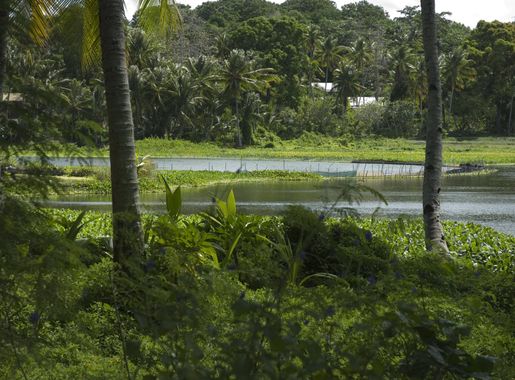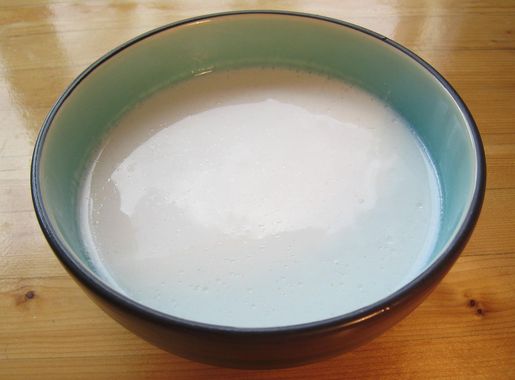
The Hidden Gem of Nauru: Buada District
Discover Buada District in Nauru: A tranquil inland escape with lush landscapes, a picturesque lagoon, and rich cultural experiences.
Nestled in the heart of Nauru, Buada District is a serene haven, offering a unique blend of natural beauty and cultural charm. Unlike the island’s coastal regions, Buada is inland, providing a distinct landscape filled with lush greenery and the tranquil Buada Lagoon at its center. The lagoon, encircled by palm trees and vibrant flora, creates a picturesque setting that is perfect for relaxation and photography. Buada District is not just about its scenic beauty; it’s also a place rich in culture and history. Visitors can explore local villages, engage with the friendly Nauruan people, and learn about the traditional lifestyles that have been preserved for generations. The district’s peaceful environment makes it an ideal spot for those looking to escape the hustle and bustle of modern life and immerse themselves in a simpler, more grounded way of living. Whether you’re an avid nature lover, a history enthusiast, or simply in search of tranquility, Buada District offers a unique experience that showcases the best of Nauru’s inland charm. It’s a destination that invites you to slow down, breathe deeply, and appreciate the natural and cultural treasures that this small island nation has to offer.
Local tips in Buada District
- Visit early in the morning to enjoy the serene beauty of Buada Lagoon without the midday heat.
- Engage with locals to learn about traditional Nauruan customs and practices.
- Bring insect repellent as the area around the lagoon can have mosquitoes, especially after rainfall.
- Wear comfortable walking shoes to explore the villages and natural trails.
- Carry a reusable water bottle to stay hydrated while exploring the lush landscape.
The Hidden Gem of Nauru: Buada District
Nestled in the heart of Nauru, Buada District is a serene haven, offering a unique blend of natural beauty and cultural charm. Unlike the island’s coastal regions, Buada is inland, providing a distinct landscape filled with lush greenery and the tranquil Buada Lagoon at its center. The lagoon, encircled by palm trees and vibrant flora, creates a picturesque setting that is perfect for relaxation and photography. Buada District is not just about its scenic beauty; it’s also a place rich in culture and history. Visitors can explore local villages, engage with the friendly Nauruan people, and learn about the traditional lifestyles that have been preserved for generations. The district’s peaceful environment makes it an ideal spot for those looking to escape the hustle and bustle of modern life and immerse themselves in a simpler, more grounded way of living. Whether you’re an avid nature lover, a history enthusiast, or simply in search of tranquility, Buada District offers a unique experience that showcases the best of Nauru’s inland charm. It’s a destination that invites you to slow down, breathe deeply, and appreciate the natural and cultural treasures that this small island nation has to offer.
When is the best time to go to Buada District?
Iconic landmarks you can’t miss
Nauru Australian Immigration Detention Center
Explore the Nauru Australian Immigration Detention Center, a significant site reflecting immigration issues and human rights in the Pacific.
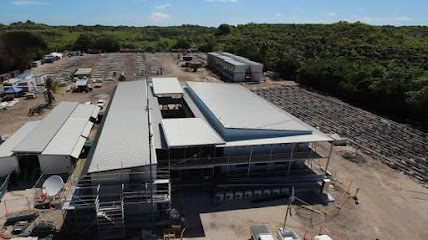
Parliament House
Explore the Parliament House in Yaren, Nauru – a pivotal site for understanding the island's governance and cultural heritage.
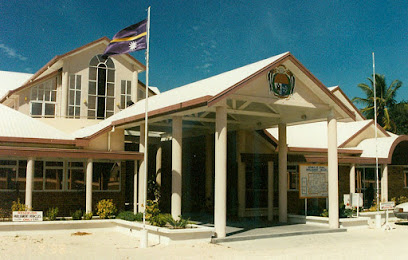
Chinese Restaurant Buada
Discover the authentic flavors of Chinese cuisine at Chinese Restaurant Buada in Arenibek, where every dish tells a story.

Nauru
Explore the hidden paradise of Nauru, where stunning beaches, rich culture, and vibrant marine life await every adventurous traveler.
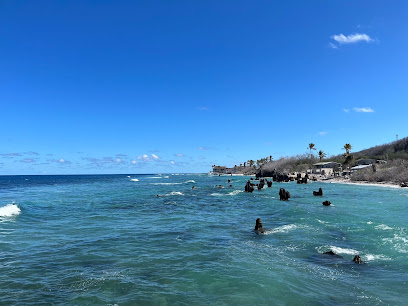
Somewhere Else in Nauru
Discover the authentic flavors of Nauru at Somewhere Else, a charming restaurant offering a delightful culinary journey in Arijejen.
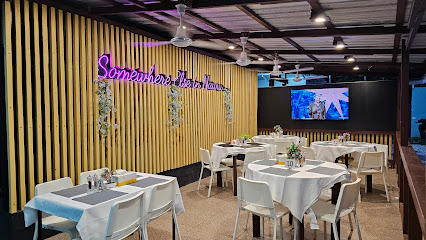
Command Ridge
Discover Command Ridge, Nauru's highest peak, where history meets breathtaking views and adventure awaits at every turn.

Power Station Control
Explore the Power Station Control in Arijejen, a remarkable engineering site offering insights into energy production and stunning views.
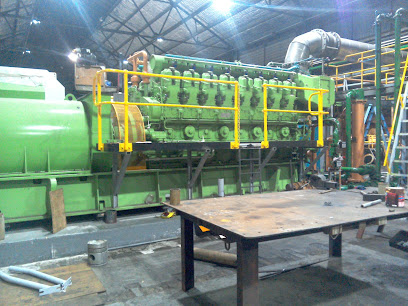
Buada Lagoon
Discover the serene beauty of Buada Lagoon, Nauru's hidden gem, surrounded by lush greenery and tranquil waters, perfect for relaxation and nature exploration.
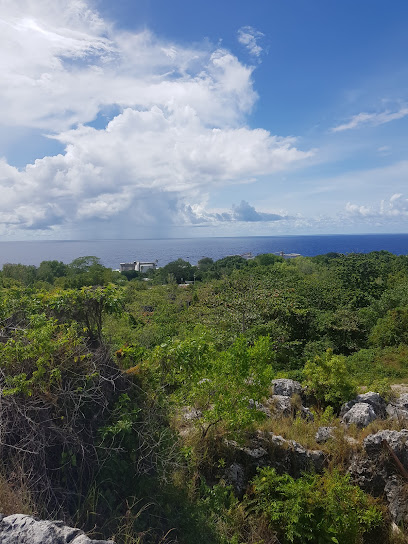
Ubweno Buada
Ubweno Buada: A serene park in Arenibek offering lush landscapes, tranquility, and a perfect escape for nature lovers and tourists alike.
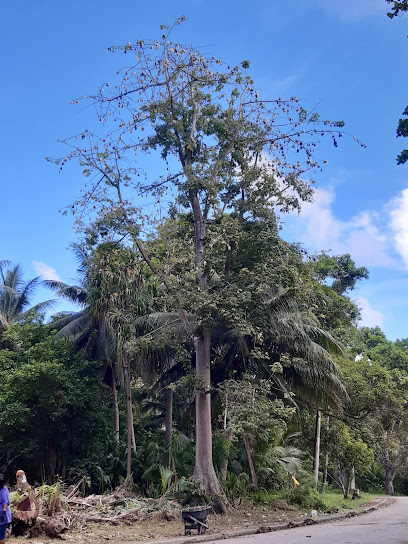
Central Plateau
Explore the breathtaking landscapes and rich culture of Central Plateau, a serene getaway in the heart of the Pacific.

WW2 Bunker
Discover the WW2 Bunker in Anabar, a significant historical landmark that reveals captivating tales from World War II, nestled in a serene environment.
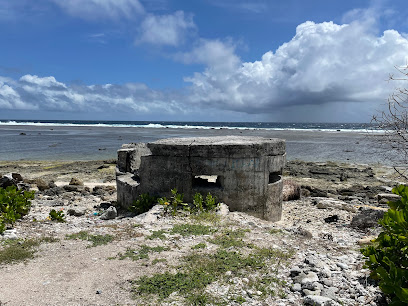
Buada National Park
Discover the breathtaking landscapes and diverse wildlife of Buada National Park, an unspoiled hiking paradise in Arenibek.

Moqua Caves
Discover the natural beauty and serene atmosphere of Moqua Caves, a breathtaking tourist attraction in Yaren, Nauru, perfect for exploration and relaxation.

Essential places to dine
The Bay Restaurant
Experience exquisite dining at The Bay Restaurant in Anibare, where fresh seafood meets breathtaking ocean views.
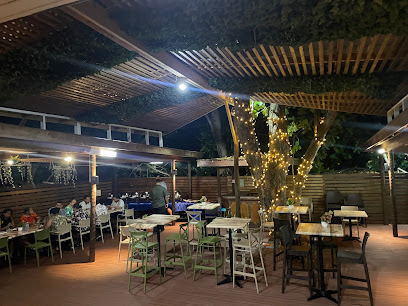
Jules On The Deck
Experience relaxation at Jules On The Deck in Nibok - where stunning views meet delightful drinks in a vibrant atmosphere.
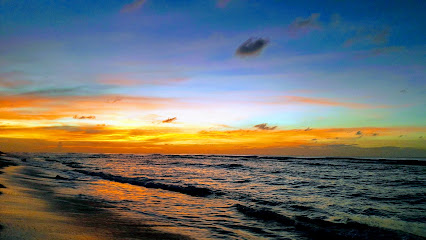
OMG Sushi Restaurant
Discover exquisite sushi and authentic Japanese flavors at OMG Sushi Restaurant in Orro – a hidden gem for food lovers!
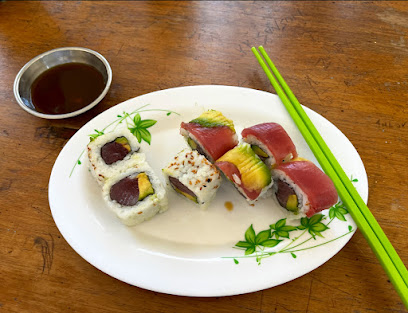
Mr Chippies
Discover delicious local cuisine at Mr Chippies - Anibare's favorite restaurant offering an unforgettable dining experience on Nauru.
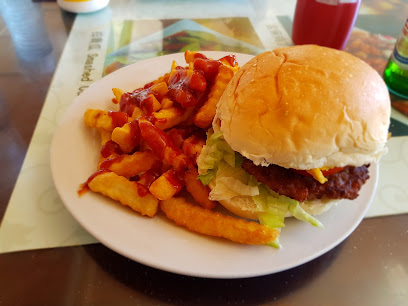
Star Kingdom
Experience the vibrant taste of Asia at Star Kingdom in Boe, where authentic flavors meet warm hospitality.
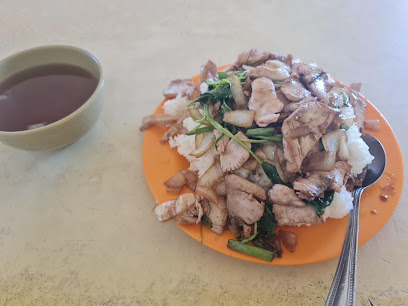
Chinese Restaurant Buada
Experience authentic Chinese flavors at Chinese Restaurant Buada in Arenibek – a must-visit for food lovers seeking genuine cuisine.

Anibare Boat Harbour Restaurant
Experience authentic Nauruan cuisine at Anibare Boat Harbour Restaurant with breathtaking views of the tranquil harbor.
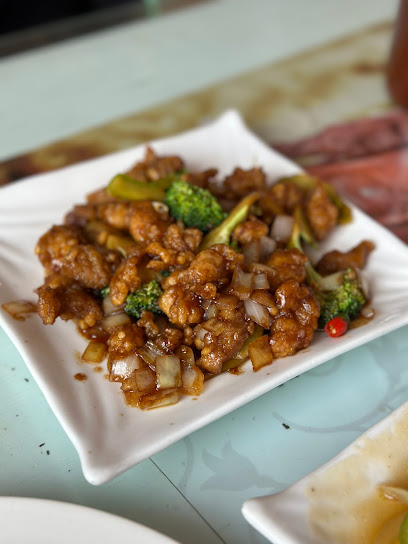
Florrowest Restaurant
Discover authentic local flavors at Florrowest Restaurant in Boe, where every dish tells a story of culture and tradition.
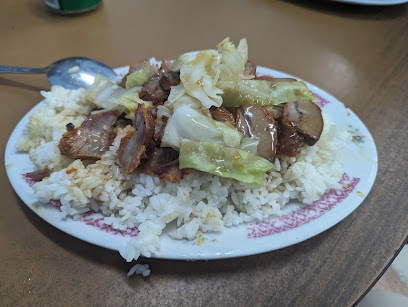
Somewhere Else in Nauru
Experience authentic Nauruan cuisine at Somewhere Else in Nauru, where fresh flavors meet local hospitality in a charming setting.
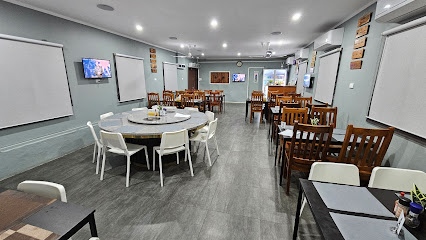
Lucky Tigeress Yum Cha
Discover the ultimate breakfast experience at Lucky Tigeress Yum Cha in Arijejen—where delightful flavors meet inviting ambiance.

Jullem
Experience authentic Chinese cuisine at Jullem in Anibare - where rich flavors meet warm hospitality.
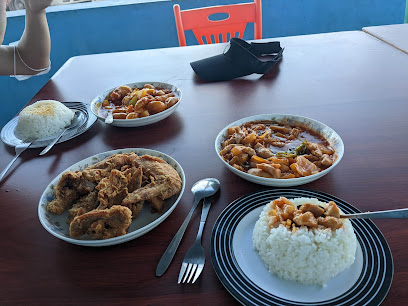
J’ RESTAURANT
Experience authentic Chinese cuisine at J’ Restaurant in Arijejen, where every dish is crafted with passion and tradition.
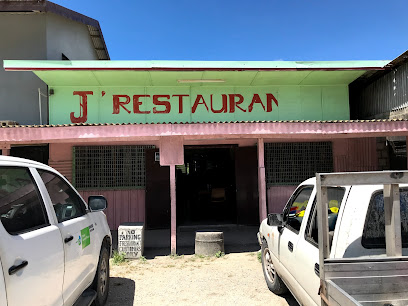
Double J
Discover the culinary delights at Double J in Ibwenape - where local flavors meet international cuisine in an inviting atmosphere.
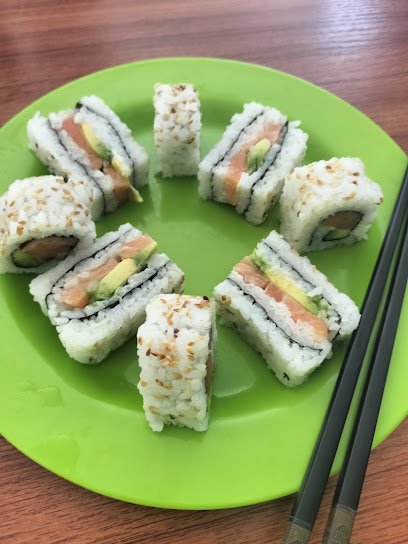
Crystal Kitchen
Enjoy family-friendly dining at Crystal Kitchen in Anibare—where delicious meals meet a welcoming atmosphere.
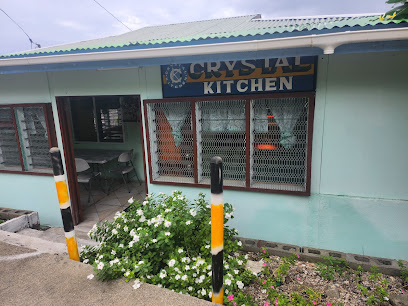
Gabab Restaurant
Experience the best of authentic Chinese cuisine at Gabab Restaurant in Boe - where every meal tells a story.
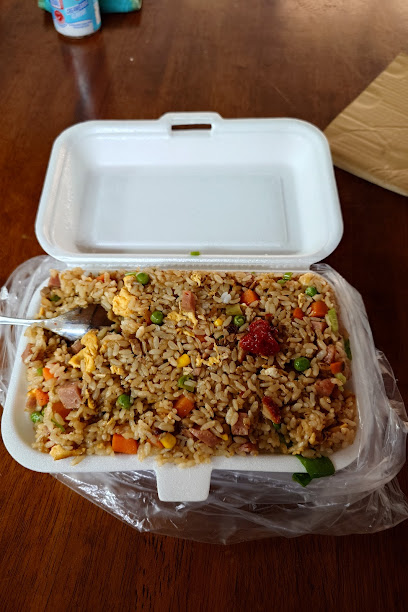
Markets, malls and hidden boutiques
Pacific store
Discover the vibrant local culture at the Pacific Store in Nibok, offering a unique selection of products and friendly community interactions.
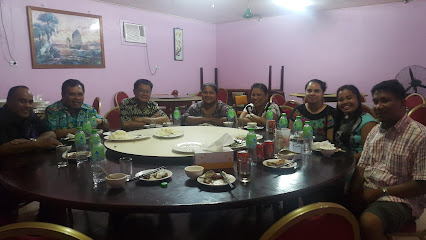
Zombies Store
Discover the eclectic charm of Zombies Store in Yaren, where local culture meets delightful shopping in a friendly atmosphere.

Vim No.1 Store
Discover the essence of Nauru at Vim No.1 Store in Arijejen, offering fresh local groceries and a glimpse into the island's culinary culture.
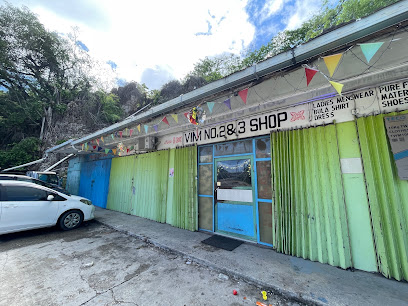
Ataro Bay Store
Experience local culture and flavors at Ataro Bay Store, your go-to grocery stop on the beautiful Island Ring Rd.
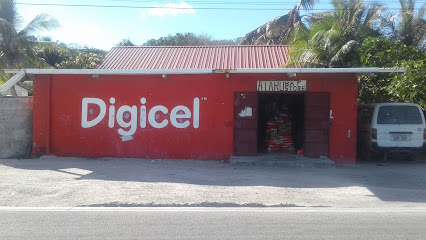
Elizabeth's Garden
Explore the unique offerings at Elizabeth's Garden in Boe, where local craftsmanship meets charming shopping in a friendly atmosphere.
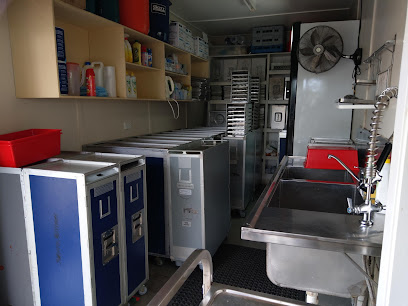
Sunset CornerEnterprise
Explore Borderline's Sunset Corner, a general store offering local goods, snacks, and fuel for your adventures.

Rainbow Store
Explore the Rainbow Store in Baiti for all your travel essentials and a touch of local charm, ensuring a delightful shopping experience.

Tuka Luka Store
Discover unique fashion at Tuka Luka Store in Yaren, Nauru, offering stylish clothing and local designs for every traveler.

MyStore
Discover the charm of Yaren at MyStore, your friendly general store for local goods, snacks, and essentials.

Aredetõ Store
Experience the local culture at Aredetõ Store in Arenibek, your go-to convenience store for snacks, essentials, and unique regional products.

Abwan Warehouse
Explore Abwan Warehouse, a cultural treasure in Arijejen, offering unique home goods and local craftsmanship that capture the essence of Nauru.

Halo Store
Experience local culture and shop for unique souvenirs at Halo Store, Arenibek's charming general store filled with authentic goods.
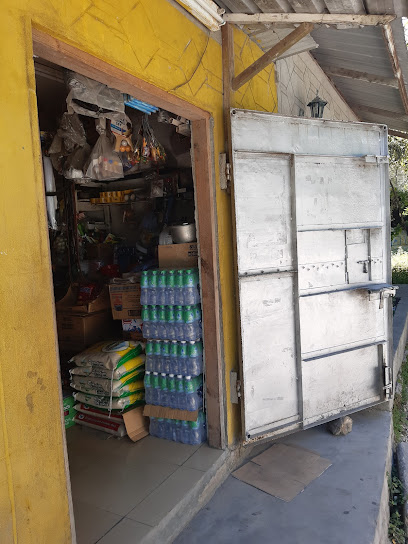
Paradise
Explore the vibrant styles of Paradise in Boe, where local culture meets contemporary fashion in an unforgettable shopping experience.

Turtle Shop (Food and Drinks)
Discover Turtle Shop in Nibok - your cozy coffee haven for delightful brews and local charm.
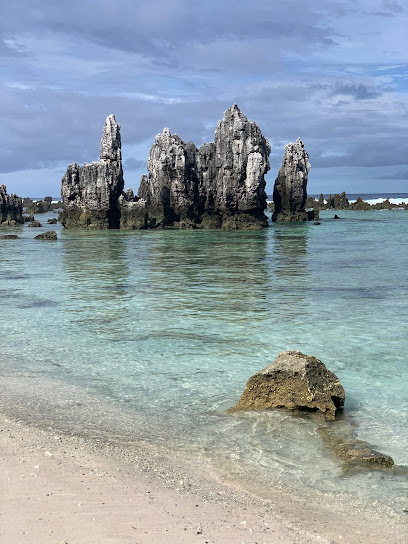
Bi-rite Store
Explore the essentials at Bi-Rite Store in Ibwenape, where convenience meets quality for every traveler’s needs.

Essential bars & hidden hideouts
The Bay Restaurant
Experience the best of local and international cuisine with stunning ocean views at The Bay Restaurant in Anibare.
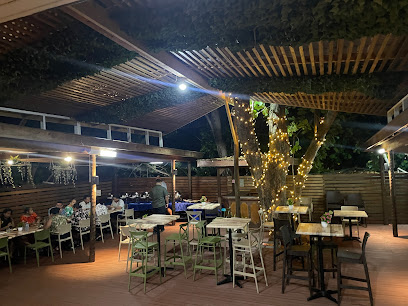
Jules On The Deck
Unwind at Jules On The Deck, a vibrant bar in Nibok offering stunning views and a delightful selection of drinks for tourists and locals alike.
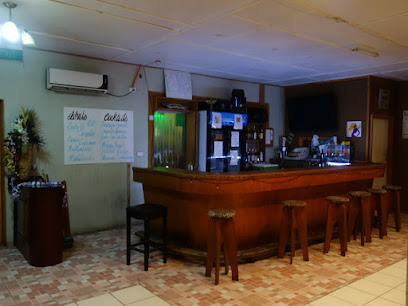
OMG Sushi Restaurant
Discover the flavors of Japan at OMG Sushi Restaurant in Orro, where fresh ingredients meet culinary artistry for an unforgettable dining experience.
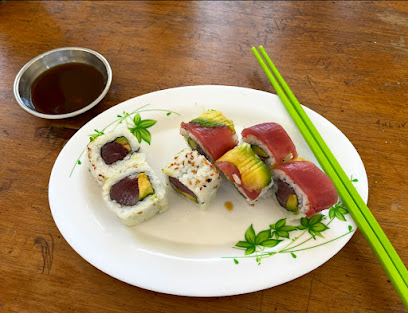
Reef Bar
Experience the tropical charm of Reef Bar in Anibare, where refreshing drinks and stunning ocean views await you.
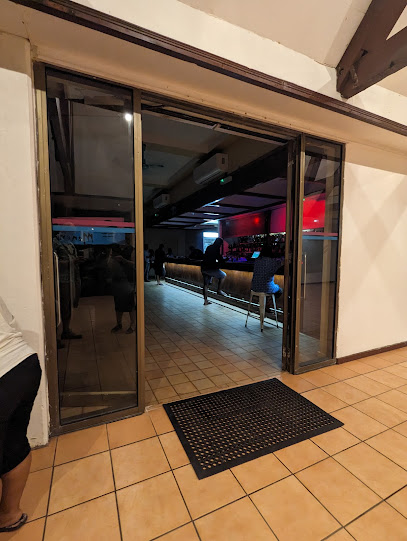
Mr Chippies
Discover the culinary delights of Anibare at Mr Chippies, where fresh ingredients meet a friendly atmosphere for an unforgettable dining experience.
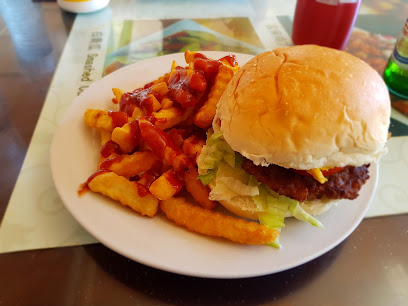
Star Kingdom
Experience the vibrant flavors of Asia at Star Kingdom, Boe's premier destination for authentic Asian cuisine and a delightful dining atmosphere.
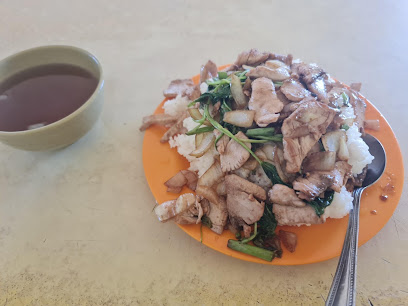
Chinese Restaurant Buada
Experience authentic Chinese cuisine in the heart of Arenibek at the inviting Chinese Restaurant Buada, a must-visit for food enthusiasts.

Anibare Boat Harbour Restaurant
Experience the flavors of Anibare at the Boat Harbour Restaurant, where fresh seafood meets stunning coastal views. A must-visit dining destination!

Somewhere Else in Nauru
Discover the authentic flavors of Nauru at Somewhere Else, a charming restaurant offering a delightful menu and warm hospitality.
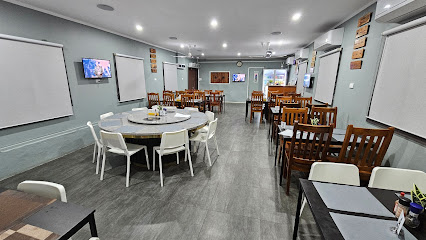
Double J
Discover the culinary delights of Ibwenape at Double J, where every meal is a celebration of local flavors and hospitality.
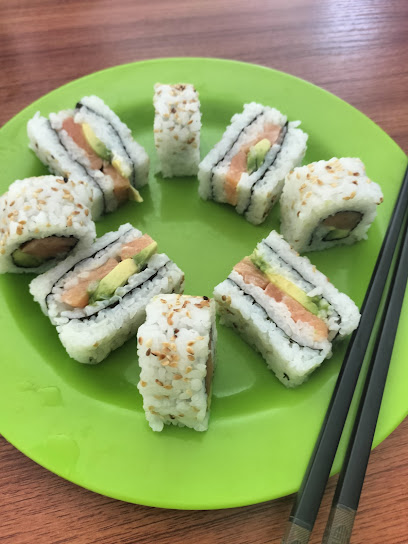
Crystal Kitchen
Discover Crystal Kitchen in Anibare, a family-friendly restaurant offering a diverse menu in a cozy atmosphere ideal for all ages.
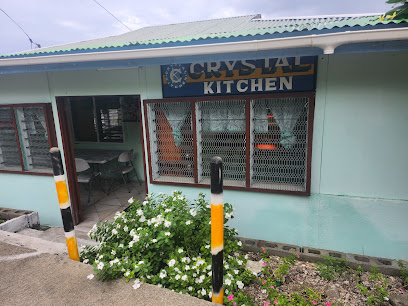
Gabab Restaurant
Experience the vibrant flavors of authentic Chinese cuisine at Gabab Restaurant in Boe, where hearty portions and a welcoming atmosphere await.
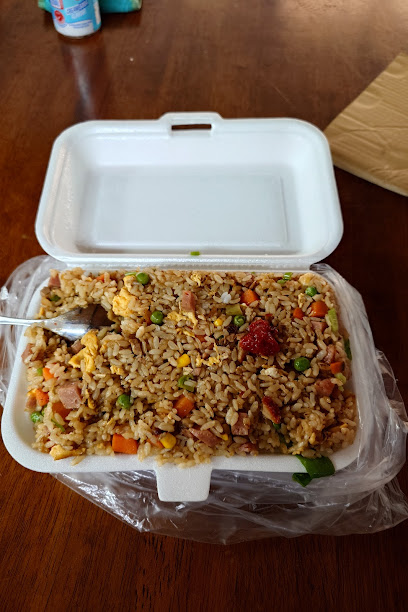
K-Love Restaurant
Discover the flavors of Yaren at K-Love Restaurant, where every dish tells a story of local culture and culinary artistry.
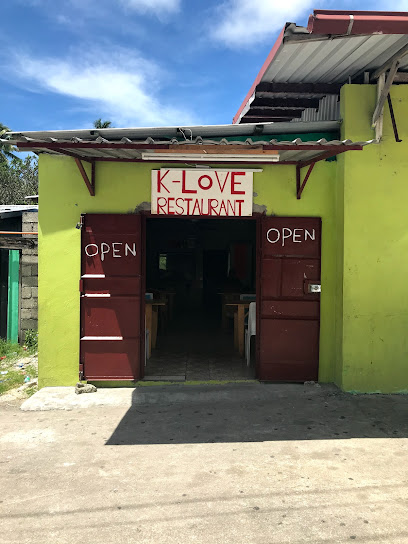
Golden Bridge Restaurant
Experience the rich flavors of authentic Chinese cuisine at Golden Bridge Restaurant in Yangor, a culinary gem for all food lovers.
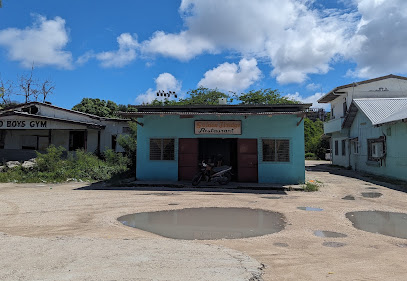
Sushi Restaurant
Experience the finest sushi in Ibwenape, where tradition meets innovation in every bite of exquisitely crafted dishes.
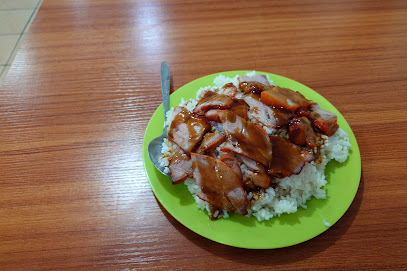
Local Phrases about Buada District
-
- HelloIaorana
[ee-ow-rah-nah] - GoodbyeKa kite
[kah kee-teh] - YesAe
[eye] - NoKare
[kah-reh] - Please/You're welcomeFakamanava
[fah-kah-mah-nah-vah] - Thank youMeitaki
[may-tah-kee] - Excuse me/SorryTangata
[tah-ngah-tah] - How are you?E aha ta
[eh ah-hah tah] - Fine. And you?Maitai. A e haere?
[my-tie. ah eh hah-eh-reh] - Do you speak English?E aha te reo Paehu?
[eh ah-hah teh reh-oh pah-eh-who] - I don't understandKare au e aroha
[kah-reh ow eh ah-roh-hah]
- HelloIaorana
-
- I'd like to see the menu, pleaseKia kite i te manu, fakamanava
[kee-ah kee-teh ee teh mah-noo fah-kah-mah-nah-vah] - I don't eat meatKare au e kai vai
[kah-reh ow eh kai vah-ee] - Cheers!Manuia!
[mah-noo-ee-ah] - I would like to pay, pleaseKia kite i te moni, fakamanava
[kee-ah kee-teh ee teh moh-nee fah-kah-mah-nah-vah]
- I'd like to see the menu, pleaseKia kite i te manu, fakamanava
-
- Help!Awhina!
[ah-fee-nah] - Go away!Haere atu!
[hah-eh-reh ah-too] - Call the Police!Karanga atu ki te Pirihimana!
[kah-rah-ngah ah-too kee teh pee-ree-hee-mah-nah] - Call a doctor!Karanga atu ki te tohunga!
[kah-rah-ngah ah-too kee teh toh-hoo-ngah] - I'm lostKua ngaro au
[koo-ah ngah-roh ow] - I'm illKua mate au
[koo-ah mah-teh ow]
- Help!Awhina!
-
- I'd like to buy...Kia kite i te hoko...
[kee-ah kee-teh ee teh hoh-kaw] - I'm just lookingE kite au
[eh kee-teh ow] - How much is it?E aha te utu?
[eh ah-hah teh oo-too] - That's too expensiveTe nui te utu
[teh noo-ee teh oo-too] - Can you lower the price?E aha koe e whakararo i te utu?
[eh ah-hah kaw-eh eh fah-kah-rah-roh ee teh oo-too]
- I'd like to buy...Kia kite i te hoko...
-
- What time is it?He aha te wā?
[heh ah-hah teh wah] - It's one o'clockKotahi no te haora
[koh-tah-hee no teh hah-oh-rah] - Half past (10)Tekau mā rima
[teh-kow mah ree-mah] - MorningAta marie
[ah-tah mah-ree-eh] - AfternoonAhiahi
[ah-hee-ah-hee] - EveningPō
[paw] - YesterdayIne
[ee-neh] - TodayIne
[ee-neh] - TomorrowApōpō
[ah-paw-paw] - 1Tahi
[tah-hee] - 2Rua
[roo-ah] - 3Toru
[toh-roo] - 4Whā
[fah] - 5Rima
[ree-mah] - 6Ono
[aw-noh] - 7Whitu
[fee-too] - 8Waru
[wah-roo] - 9Iwa
[ee-wah] - 10Tekau
[teh-kow]
- What time is it?He aha te wā?
-
- Where's a/the...?Kei hea te...
[keh heh-ah teh] - What's the address?He aha te wāhitau?
[heh ah-hah teh wah-hee-tow] - Can you show me (on the map)?E aha koe e whakaatu mai i ahau (ki te mahere)?
[eh ah-hah kaw-eh eh fah-kah-ah-too my ee ah-how kee teh mah-heh-reh] - When's the next (bus)?He aha te wā e whai mai ana te (waka wera)?
[heh ah-hah teh wah eh fah-ee my ah-nah teh wah-kah weh-rah] - A ticket (to ....)He tiki (ki ...)
[heh tee-kee kee]
- Where's a/the...?Kei hea te...
History of Buada District
-
The Buada District, located in the southwestern central part of Nauru, has a rich history that dates back to the early Polynesian and Micronesian settlers. Archaeological evidence suggests that the area was inhabited as far back as 3,000 years ago. The early Nauruans built their homes around the Buada Lagoon, a unique freshwater body in an island otherwise surrounded by ocean, which provided a critical resource for the island's early inhabitants.
-
The traditional culture of the Buada District is deeply rooted in the customs and practices of the Nauruan people. The area around Buada Lagoon served as a focal point for community gatherings and cultural activities. Traditional fishing methods, agricultural practices, and storytelling were integral parts of daily life. The lagoon itself was not only a source of fish but also a place for cultivating taro, an essential crop in the Nauruan diet.
-
In the late 19th century, Nauru, including the Buada District, came under German colonial administration. The Germans established a more structured governance system and introduced various infrastructural developments. Despite the colonial imposition, the people of Buada managed to preserve much of their traditional way of life. However, the colonial period also marked the beginning of significant changes, especially with the introduction of phosphate mining, which would later dramatically impact the island's economy and environment.
-
During World War II, Nauru was occupied by Japanese forces from 1942 to 1945. The Buada District, like the rest of the island, experienced hardship and disruption. The Japanese established military installations and fortifications, some of which were located near Buada Lagoon. The local population was subjected to forced labor, and many were relocated to other parts of the Pacific. The war left a lasting impact on the district, with remnants of Japanese fortifications still visible today.
-
After World War II, Nauru came under trusteeship administered by Australia, New Zealand, and the United Kingdom. The Buada District, along with the rest of Nauru, began to rebuild and recover from the war's devastation. In 1968, Nauru gained its independence, and the Buada District became one of the island's fourteen districts. The post-independence period saw efforts to modernize and develop the area, balancing traditional practices with new economic opportunities.
-
The Buada District has faced significant environmental and economic challenges, particularly due to the extensive phosphate mining that has taken place on the island. The mining activities have led to environmental degradation, which has affected the natural landscape and the ecosystem around Buada Lagoon. Efforts have been made to rehabilitate the land and restore the lagoon's health, reflecting the community's resilience and commitment to preserving their environment and heritage.
-
In recent years, there has been a cultural revival in the Buada District, with initiatives aimed at preserving and promoting Nauruan heritage. Community projects focused on traditional arts, crafts, and storytelling have gained momentum. The Buada Lagoon remains a central cultural symbol, and efforts to protect and celebrate it continue to unite the community. These initiatives highlight the district's rich cultural heritage and its importance to the identity of the Nauruan people.
Buada District Essentials
-
Buada District is located on the island nation of Nauru in the Pacific Ocean. The only international airport on Nauru is Nauru International Airport (INU), located in Yaren District, just a short drive from Buada District. Flights to Nauru are limited and typically originate from Brisbane, Australia, or other Pacific islands such as Fiji or the Solomon Islands. Once you arrive at Nauru International Airport, you can take a taxi or arrange for a hotel shuttle to transport you to Buada District.
-
Nauru is a small island, and transportation options are limited. The most common mode of transportation is by taxi, which can be arranged through your hotel or found at major points such as the airport and government offices. Renting a bicycle or scooter is also a popular option for getting around, as the island's small size makes it easy to navigate. Public buses operate on a limited schedule, primarily serving local residents. Walking is also a feasible option for exploring Buada District and its surroundings.
-
The official currency of Nauru is the Australian Dollar (AUD). Credit cards are accepted in some hotels, restaurants, and shops, but it is advisable to carry cash, especially when visiting smaller establishments. ATMs are available on the island, but they may be limited, so it is wise to withdraw sufficient cash upon arrival. Banks in Nauru may have restricted hours, so plan accordingly.
-
Buada District is generally a safe destination for tourists. However, it is always important to take standard precautions. Avoid walking alone at night in unfamiliar areas and keep an eye on your belongings in crowded places. While there are no specific high-crime areas targeting tourists, it is best to stay vigilant and aware of your surroundings. Petty theft can occur, so secure your valuables and avoid displaying expensive items.
-
In case of emergency, you can dial 110 for police assistance, 111 for fire emergencies, and 112 for medical emergencies. Nauru has limited medical facilities, so it is essential to have comprehensive travel insurance that covers medical emergencies and potential evacuation. The Republic of Nauru Hospital, located in Yaren District, is the primary medical facility on the island. For minor health issues, there are pharmacies where you can purchase over-the-counter medications.
-
Fashion: Do dress modestly, as locals appreciate conservative attire. Avoid wearing overly revealing clothing. Religion: Do respect local customs and traditions. Be mindful of local religious practices and dress appropriately when visiting places of worship. Public Transport: Do be patient and courteous when using public transportation. Don't expect a strict schedule, as services can be irregular. Greetings: Do greet people with a friendly wave or handshake. A warm smile goes a long way. Eating & Drinking: Do try local dishes and be open to culinary experiences. Don't refuse food or drink offerings, as it may be considered impolite.
-
To experience Buada District like a local, take a walk around the Buada Lagoon, a central feature of the district, and enjoy the lush surroundings. Engage with locals, who are often friendly and willing to share stories about their culture and traditions. Visit local markets to buy fresh produce and handmade crafts. Participate in community events or festivals if you have the opportunity, as they offer a glimpse into the vibrant local culture. Don't miss out on trying traditional Nauruan dishes such as coconut fish and pandanus fruit.
Nearby Cities to Buada District
-
Things To Do in Boe
-
Things To Do in Denigomodu
-
Things To Do in Aiwo
-
Things To Do in Uaboe
-
Things To Do in Anibare
-
Things To Do in Yaren
-
Things To Do in Ijuw
-
Things To Do in Anabar
-
Things To Do in Kosrae
-
Things To Do in Mili
-
Things To Do in Majuro
-
Things To Do in Aur
-
Things To Do in Lata
-
Things To Do in Auki
-
Things To Do in Tulagi


